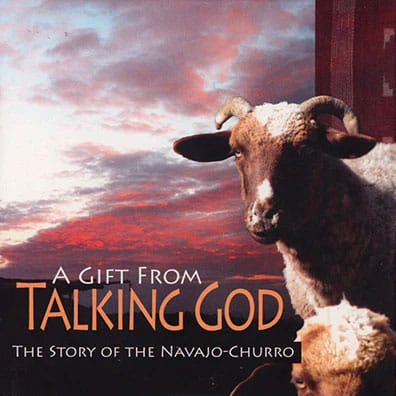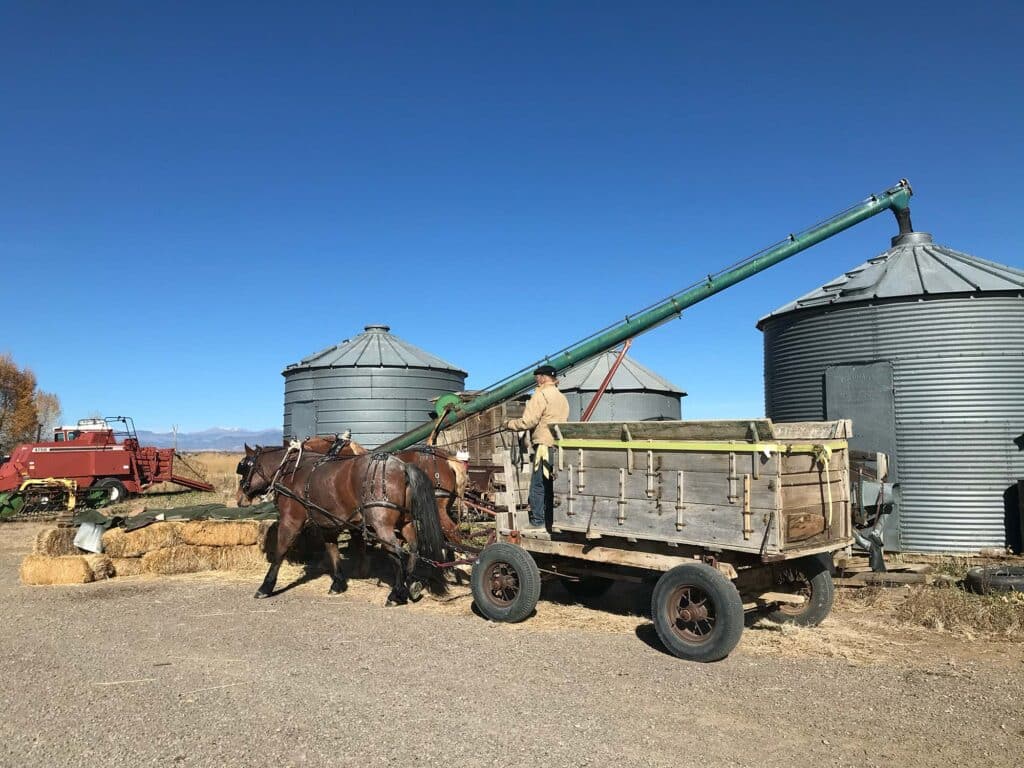In the Navajo tradition, the sheep were a gift from Talking God.
Clouds were brought down by Talking God and shaped into the body of the sheep. And he also picked some willow branches, because the willow branches are very straight, and inserted them into the body. And a rainbow was taken and made into the hooves and horns of the sheep, and the face was made of dawn, and rock crystals were placed in the face for the eyes. Then sheep tobacco was placed on the head of the sheep for the ears, and then a breath of life was blown into them and the sheep were created and given to the people.
Jay Begay, Jr from the DVD A Gift From Talking God

Navajo-Churros were the first sheep on the American continent. They were brought to Mexico in 1598, 425 years ago, by the Spanish Conquistadores. The sheep they brought were Churras from the Pyrenees Mountains of Spain, because they were hardy and triple purpose-meat, milk, and wool.
Our journey with Churros started because we wanted sheep to eat weeds on our property. Colin saw an ad in the paper and we bought a ram and 8 ewes. We fell in love with these smart, loyal, scrawny, long-legged, wild sheep, that flourish in our harsh Southwest climate of semi-arid summers with cold nights, and subzero winters. They live well on poor forage, lamb easily and are especially good, affectionate, mothers. They produce lustrous, very long and strong wool fibers in 16 different colors. We now have 80 breeding ewes and over a hundred lambs each spring. We sell their wool and meat. We also sell registered breeding stock to the Reservation and breeders around the country.
Today Navajo-Churro Sheep are classified as a threatened heritage breed, there are only around 5000 of them in North America. About 1500 of these are on the Navajo Reservation. Two times they almost became extinct. The first time, in the 1860's, the United States declared war on the Navajo Nation and Kit Carson was sent to subdue them. His scorched earth campaign burned crops and homes, and slaughtered as many sheep as he could find and killed many Dine'. The rest were forced to relocate and made to walk 300 miles on the tragic Long Walk to Bosque Redondo. But some of the Dine' escaped and hid with their sheep in the mountains. Because of a new treaty the Dine' were allowed to return home. They began to rebuild their lives, culture, and the Churro sheep herds which had always been prominent in Dine' spiritual traditions. The Churros provided a healthy and sustainable source of food and income, their wool was ideal for weaving iconic Navajo blankets and rugs. By 1890 there were one million sheep on the reservation, and by 1930 there were two million.
The second time the Churros came close to extinction began in the 1930's, when the United States Government decided the Reservation was overgrazed. Thousands of sheep, goats and horses were shot, immediately decimating over two thirds of the flocks. For 20 years the Navajo Livestock Reduction Program continued with no regard for the rights of owners. The Dine' economy was destroyed. Many were reduced to living on Government subsidies or bare subsistence farming. Weavers had to buy yarn in order to weave.
By 1977, there were only 450 Churros left. Dr Lyle McNeal, a veterinarian specializing in sheep, began the Navajo Sheep Project, the largest conservation project of an endangered livestock breed ever undertaken in the United States. The Navajo Sheep Project revitalized the breed and kept it from extinction.
Today the Navajo Nation is reclaiming it's sheep and weaving culture. Diné Bé'liná (The Navajo Lifeway) is a nonprofit grassroots organization led by Navajo weavers and shepherds, who are committed to preserving, protecting, and promoting the Navajo way of life. They provide education, workshops, consultations, demonstrations, and each year host the 'Sheep is Life' Celebration. This Celebration takes place on the Reservation and includes shearing, wool processing, weaving, and traditional sheep harvesting demonstrations and classes; lectures on sheep grazing and management, local weaving history, and Churro registration procedures; participation in traditional sheep prayers and blessings; competitions and judging of Churro wool and Churros; and the experience of traditional foods. There is also a silent auction of Dine' sheep-related arts and crafts. It is always the third weekend in June and is free.
The Churros have been a gift to us. We are thankful to have them as partners on our farm. Their manure fertilizes the land and the land feeds them in return. We hope they will always prosper and continue to take care of the land, bring moisture and make the land flourish, and be safe on their journeys.










